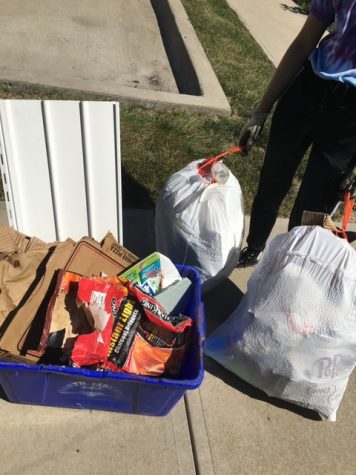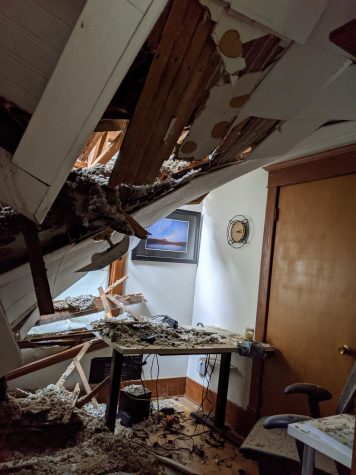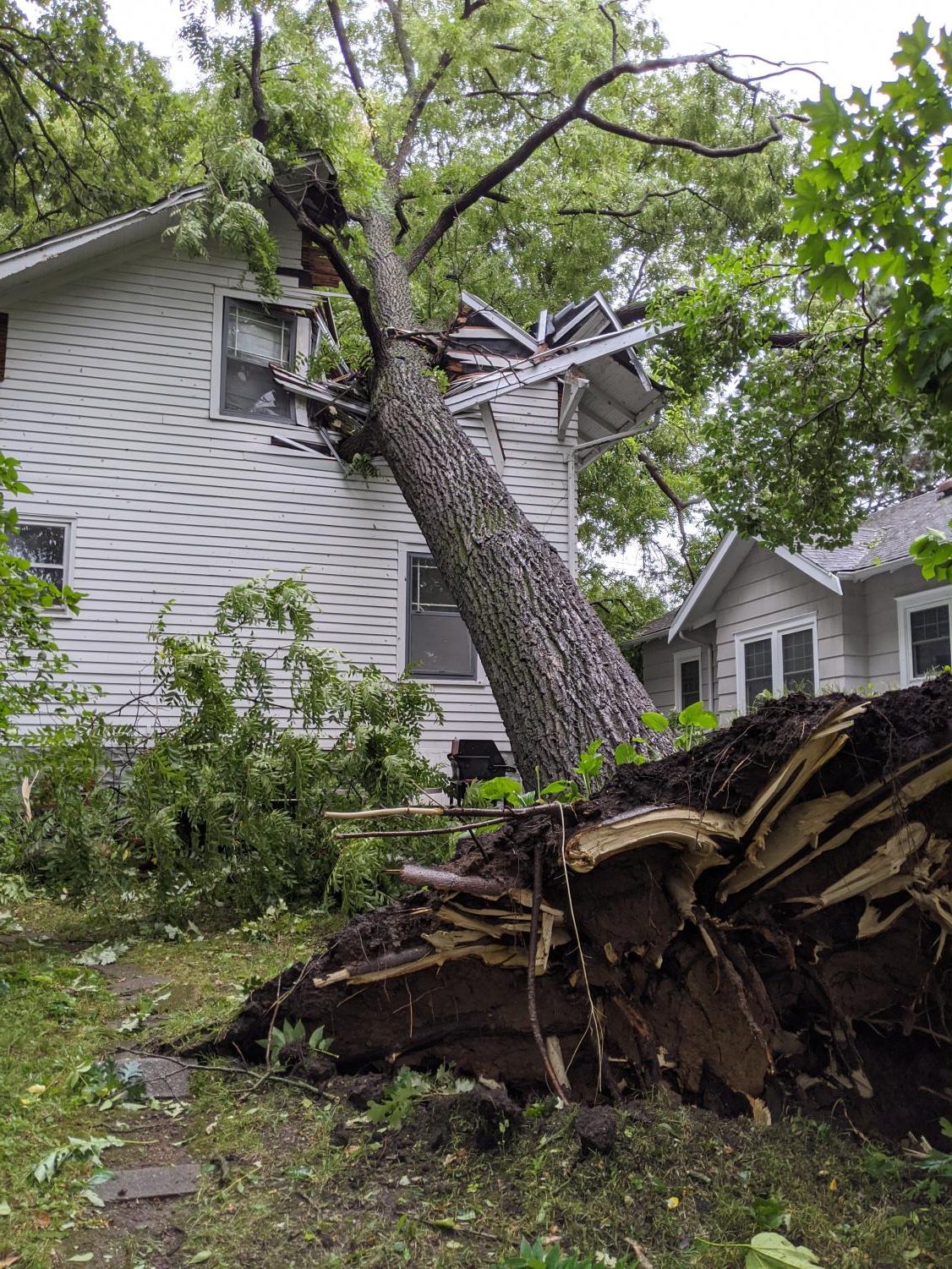Too Close to Home
A record storm made its way through our community with huge impacts. Liberty students and staff recount their experiences with the aftermath.
October 20, 2020

On August 10th, emergency sirens went off about 20 minutes before wind gusts of up to 140 mph covered an area nearly 800 miles wide. The hurricane-like storm lasted 14 hours destroying and severely damaging thousands of homes, schools, and businesses. The storm took out trees older than some houses and tore at power lines leaving at least 480,000 Iowans without power. Officials reported 60,000 damaged homes in Cedar Rapids alone, with all in all nearly $4 billion dollars estimated in damage and rising as people began to assess their homes.
“It was kind of devastating,” said Lauren De Young, senior, who volunteered to clean up tree branches and debris along a trail. “So many people lost parts of their houses. . . I felt lucky that all that happened to my house was a power outage.”
The derecho knocked out power to more than 1 million people in the Midwest, with destruction made worse due to the width of the storm.
“[We had] no water, power, or phone service [and] internet for a week . . . my whole family had to use the woods behind our house for the restroom,” said Caden Schweitzer, senior.
Most families like Schweitzer’s were unprepared for a storm such as this.
“I knew a storm was coming, but I thought it wasn’t anything to be concerned about,” Schweitzer said.
Before the derecho, most had been prepared for tornadoes, and although a storm of this magnitude is similar, according to the National Oceanic and Atmospheric Administration (NOAA), a derecho is much different. Unlike a tornado, a derecho is a “widespread, long-lived wind storm that is associated with a band of rapidly moving showers or thunderstorms.”
A storm like that needed an immediate reaction from our community.
“My Elizabeth and I had our chainsaws out and were doing clean up before the rain stopped,” English teacher Hoobie Schott said. “We weren’t scared, but it was a pretty impressive bit of destruction.”
A storm is classified as a derecho if the wind damaged “swath” or strip extends more than 240 miles and includes wind gusts of 58mph or greater along the majority of it. And a storm like the one that rained across the Midwest resulted in the loss of 8.7 million acres of corn and 5.3 million acres of soybean, Lance Lillibridge of the Iowa Corn Growers Association told Fox Business. Adding to that, the greater issue was the loss of food storage bins on farms.

With all of those issues, Governor Kim Reynolds filed an expedited presidential major disaster declaration seeking nearly $4 billion dollars. However, President Donald Trump signed only part of the request, approving only the $45 million dollars of public assistance portion of Reynolds request. That covered only 16 counties. Trump did not approve individual assistance requests for 27 counties consisting of $82.7 million dollars for homes destroyed or with major damage, $3.77 billion for agriculture damage to farmland, grain bins and buildings, and $100 million dollars for private utility repairs.
“We don’t have city water, just our own well. That means without power, no water. So, we had to buy a generator, which was on my list of projects for the fall… I wish I had gotten to it earlier because everybody in Cedar Rapids was trying to buy a generator,” said Schott.
Thankfully though, additional funding was later given to Cedar Rapids under the Federal Emergency Management Agency’s Individual Assistance Program.
As another storm that our community has survived is added to the list, this only proves how truly strong and resilient Iowans are.

